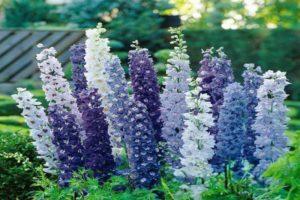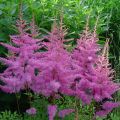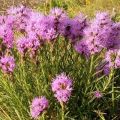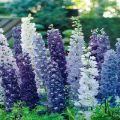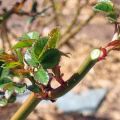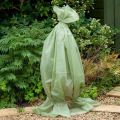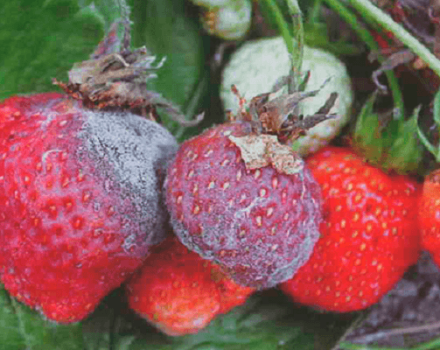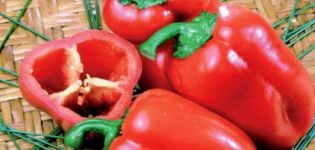How and when to cut astilbe in preparation for winter, whether it is necessary to cover
Preparing astilba for winter is the most important part of the technology for growing this crop in a personal plot. The overwintering of the culture, its growth and development next year, the abundance and beauty of flowering depend on the correctness of its implementation. Neglect of even the most, at first glance, insignificant moment of these preparatory measures can lead to both weakening and complete death of the plant.
How to prepare a flower for winter
Preparing a flower crop such as astilba for winter includes pruning, mulching, fertilizing.
Do I need to cut the plant for the winter
Pruning this crop for the winter, in most cases, must be done for several reasons:
- Seeds ripening in capsules on dried paniculate inflorescences take away a large amount of nutrients, thereby weakening the plant.
- The leaves damaged by the first frosts will still die off, while creating conditions for the development of diseases and wintering of pests.
- On bushes more than 5 years old, as well as in a harsh climate, it is necessary to cut off the aboveground part in order to most effectively and reliably cover the plant from frost and cold weather using various covering materials, plastic film.
Also, pruning allows you to give the plant a more accurate and well-groomed appearance gradually dropping foliage.
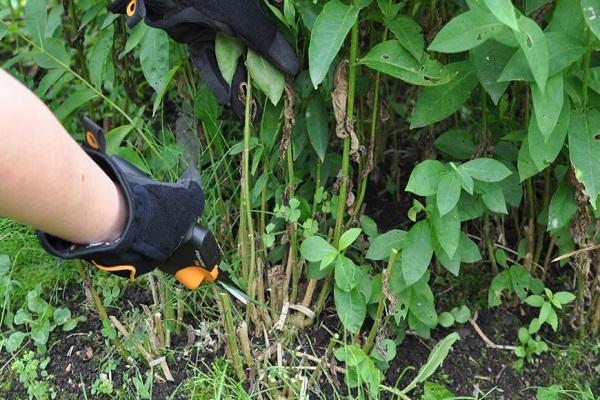
Timing
Pruning involves removing flower stalks with faded paniculate inflorescences and frost-damaged foliage that has begun to dry out. Peduncles with panicles are removed after flowering, as soon as petals begin to fall off the inflorescence, and it becomes yellow-brown in color. Depending on the characteristics of the variety, this part of the pruning is performed in July-August. The foliage is cut in the fall, when the first night frosts come - October-November.
Pruning rules
The pruning technology of this flower crop includes the following steps:
- Faded and brown inflorescences are completely removed along with the peduncles.
- The foliage is cut at the very surface of the earth. In this case, the remaining hemp should protrude above the soil surface by no more than 15-20 millimeters.
Pruning is carried out with pruning shears or sharp scissors previously disinfected in a 1% solution of potassium permanganate. Autumn pruning of this culture is not carried out when it is planted at this time - in such cases, the annual astilbe bush is cut off only the next fall.
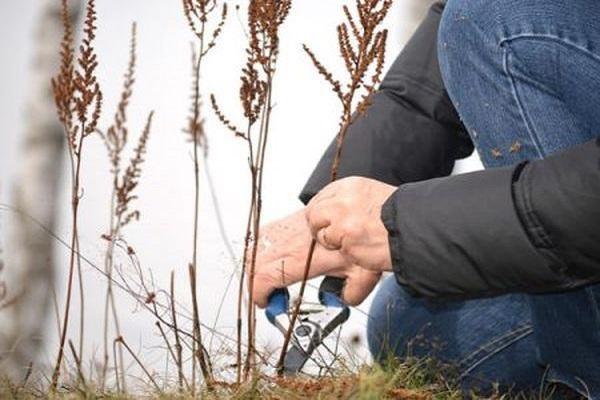
Mulching
After pruning, the soil around the plant is carefully loosened to a depth of 10-12 centimeters and covered with a 5-6 centimeter layer of mulch. Well-rotted compost, humus, straw, dry grass, low-lying peat are used as mulching materials.
It is undesirable to use fresh oak sawdust, wet and decaying foliage, any polymeric materials that do not allow air to pass through as mulch.
Fertilizer
Autumn feeding is necessary to strengthen the plant and overwinter it well. It is carried out with phosphorus and potassium fertilizers in a dose of 20 grams of each active ingredient. In physical weight, this is about 40 grams of potassium sulfate and 50 grams of double superphosphate.
These fertilizers are applied in two ways:
- In dry form - randomly, when loosening the soil before or after trimming the aerial part of the plant, with the obligatory embedding to a depth of 10-12 centimeters.
- In the form of a solution - with water-charging autumn watering.
When introduced in the form of a solution, superphosphate is preliminarily dissolved in boiling water, and then mixed with potassium sulfate diluted in cold water.

Astilbe's shelter for wintering
Young bushes after timely pruning and mulching in a temperate climate do not need shelter. Starting from the age of 5, when the overgrown rhizome already strongly protrudes above the soil surface, the plant needs a mandatory shelter.
The simplest, but at the same time reliable, shelter for a given culture is done as follows:
- Having retreated from the rhizome about 10-15 centimeters, 4 wooden bars are stuck next to the plant.
- The bars are connected with planks.
- Dry foliage is poured inside the resulting frame.
- The frame with foliage is covered with a non-woven porous material - lutrasil.
- A dense and thick plastic film is placed on top of the lutrasil, pressing its edges with bricks, stones or sprinkling with earth.
Such a shelter will protect the rhizome with buds from freezing during the winter, protect the plant from damage by rodents.
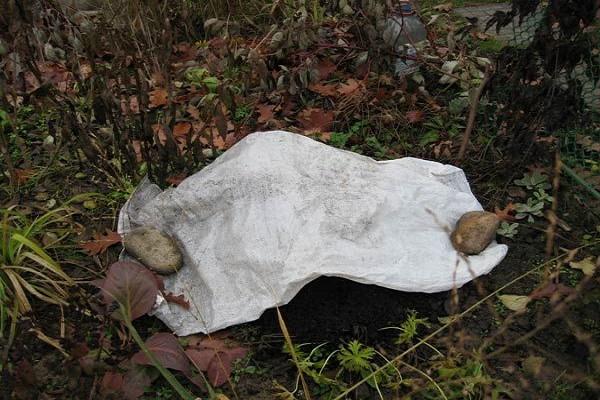
What are the features of the preparation of astilba in different regions
Depending on the conditions of the region in which the culture winters, there are some peculiarities in its preparation for the winter season.
In the Urals and Siberia
In the conditions of Siberian harsh winters, plants of this species at any age must be covered for the winter after pruning. For this, large frames are erected above them, or simply covered with a large layer of spruce branches and straw. Also, often in such conditions, astilbe is grown in large pots, which, with the onset of the first frost, are brought into dry and cool rooms for the winter, where they can be guaranteed to be stored in winter.
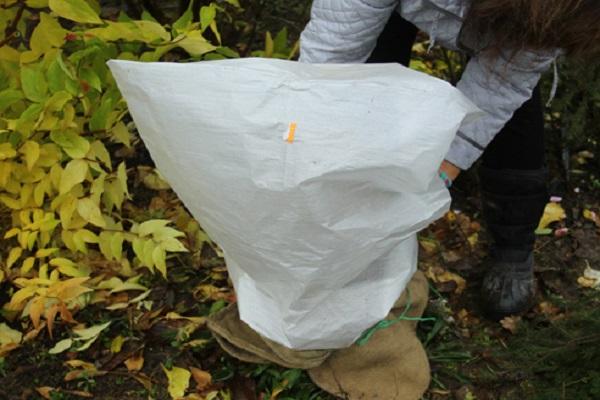
In the Central lane and the Moscow region
In the conditions of the Middle Lane, young plants for the winter are necessarily cut off and mulched, for older bushes they make a frame shelter.
In the Volga region
In the Volga region, the preparation of culture for winter has the following features:
- The culture is not covered for the winter, limited to pruning and mulching.
- In the southernmost regions of this region, characterized by mild winters, they are limited to cutting only peduncles, leaving intact leaves.
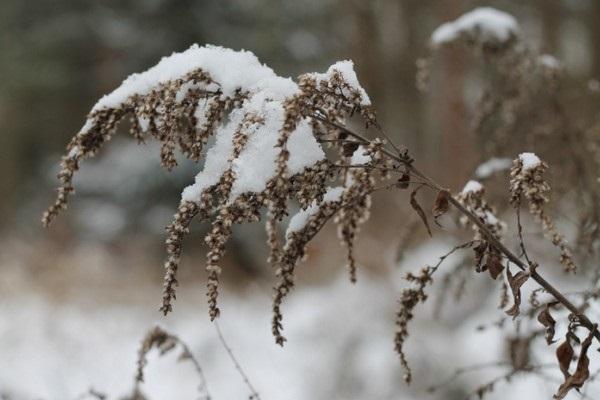
Typical mistakes when preparing for the winter period
The main, most common mistakes made by flower growers when preparing astilba for winter are the following:
- Incomplete pruning - many growers do not cut off faded inflorescences, as a result of which the plant is greatly weakened, giving a very large amount of nutrients to seed formation.
- Neglect of phosphorus-potassium fertilizing - in the absence of such an event as the introduction of phosphorus and potassium fertilizers under the culture, astilbe leaves in winter insufficiently strong.This, in the case of extreme cold weather and insufficient insulation, can play a fatal role.
- Poor mulching - a small layer of mulch can lead to the fact that in case of even slight frosts, the soil near the plant will freeze more intensively, causing damage or complete death of the rhizome.
Also in areas with severe winters and when the plant is more than 5 years old, the most serious mistake is poor insulation of the bush, leading to its damage or complete death..

